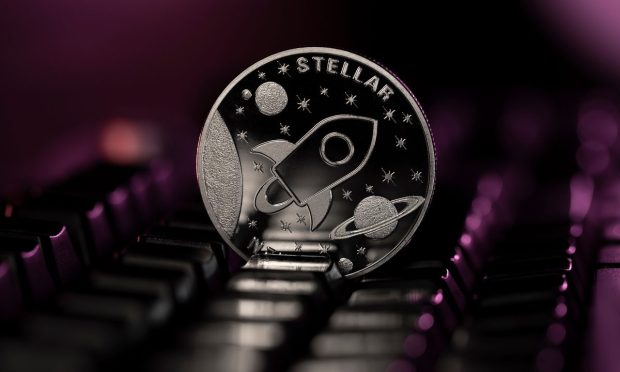PYMNTS Blockchain Series: What Is Stellar’s Lumen? A Payments Crypto That Isn’t Trying to Overthrow the Financial System

Throughout this series of articles, we’re looking at the top blockchains in cryptocurrency to help you make sense of the alphabet soup of so-called “altcoins” that exists beyond that of bitcoin’s BTC and Ethereum’s ETH.
We will look at what they are, how they work, what they do and their pros and cons.
You’ll come out of this series not only with a better sense of what cryptocurrency is all about, but you’ll also understand why the way a token works — the way its blockchain processes transactions — is key to its success or failure as a digital asset.
See also: PYMNTS Blockchain Series: What Is XRP? The Cryptocurrency Making A Ripple In Payments
So what’s Stellar?
First, it’s a blockchain aimed at the remittance market, powered by the lumen, or XLM, cryptocurrency.
Second, it isn’t Ripple. This is relevant for a number of reasons, starting with their goal of revolutionizing the same market — cross-border payments — with a focus on low-dollar-value transactions.
It’s also relevant because they have a founder in common: Jed McCaleb, one of the original developers of Ripple. He left the company in 2014 under circumstances that can’t really be described as friendly (and was the focus, in obsessive detail, of this 2015 Observer article) to found Stellar.
But the core disagreement was that McCaleb wanted to focus on individuals. The two companies come at the remittance market from different directions: Ripple targets transactions between a network of banks and payments processors, while Stellar is aimed more at services enabling peer-to-peer retail transactions via the Stellar wallet and other channels.
The blockchains have a good deal of similarity, as they were both coded largely by McCaleb, but there are technical differences under the hood.
But both enable cross-border transactions in seconds and for pennies, rather than the 7% to 8% a transaction of several hundred dollars it takes to do so via SWIFT.
What About the Lumen?
While the lumen, or XLM, token is the blockchain’s native cryptocurrency, using it isn’t required except for small transaction fees — so small that Stellar Development Foundation (SDF) describes them as a “nominal barrier or cost” to prevent the ledger from becoming “filled with spam or nonsense.”
While all accounts must have some lumens, the minimum required amount is currently 1 XLM — worth about $0.19 as of today (March 4), and transaction fees start at 0.00001 XLM, depending on the complexity of the transaction.
Like Ripple, Stellar had a one-off prelaunch mint of 100 billion XLM, and in November 2019 the SDF destroyed much of its own lumen treasury, leaving just 50 billion XLM extant. About half of that is in circulation, and the rest remains in the hands of the SDF. Stellar is currently the No. 31 cryptocurrency, with a market capitalization of $4.3 billion.
Developers can create their own cryptocurrencies on Stellar, just as they can on Ethereum. One of the highest-profile of these was Circle’s USD Coin, which created the native Stellar USDC version. And last year, one of Europe’s oldest banks, Bankhaus von der Heydt, launched a euro-pegged EURB on Stellar.
Not a Tear-Down
It’s worth noting that unlike most payments blockchains — from Bitcoin on — Stellar doesn’t see itself as a way around the global financial system.
According to the SDF, its compliance-friendly blockchain “is built for interoperability between global payment systems” and “designed to make it easy and efficient to move currency internationally.”
StellarX is a decentralized exchange (DEX) that has an on-ledger order book and on-ledger transaction settlement, as well as global fiat gateways that allow crypto-to-crypto, crypto-to-fiat and even fiat-to-fiat transactions.
Among the tools Stellar offers is forex conversion, allowing users to send funds in one currency and pick them up in another.
One feature of Stellar is its global network of “anchors” — about two-dozen financial institutions, FinTechs and money service businesses that provide fiat on- and off-ramps, as well as anti-money-laundering compliance services, SDF CEO Denelle Dixon told PYMNTS last year.
See more: Blockchain Rails Plus Stablecoin Advance DeFi Reality
And the SDF is pushing into central bank digital currency (CBDC) development and has — or had — a pilot program with Ukraine’s central bank.
The overall goal, the foundation said, is “enhancing the global financial system, not supplanting it.”
Partner Growth
Stellar, MoneyGram and stablecoin issuer Circle announced a partnership on Oct. 6 that will enable Stellar wallet holders to send and receive Circle’s USD Coin — a fiat-backed, dollar-pegged stablecoin — using MoneyGram as a fiat gateway.
Read more: MoneyGram, Stellar Development Team on eWallet Offering Near-Instant Settlements in USDC
On Nov. 18, MoneyGram announced a cash-in, cash-out pilot for U.S. users that would let them deposit cash into their digital wallets at MoneyGram outlets and send payments internationally in USDC, which can be exchanged for any fiat currency the payments and money transfer firm supports.
That’s not the only use of Stellar USDC, of course. In October, a partnership was announced between Flutterwave and Paris-based Tempo Payments to establish an EU-Africa remittance payments channel, and the SDF has been working with ClickPesa on that continent as well.
Related reading: Stellar: Digital Dollars Are A Financial Tool For Everyone
Other payments firms and FinTechs Stellar is working with include Stably, BitGo, Finclusive and Wyre.